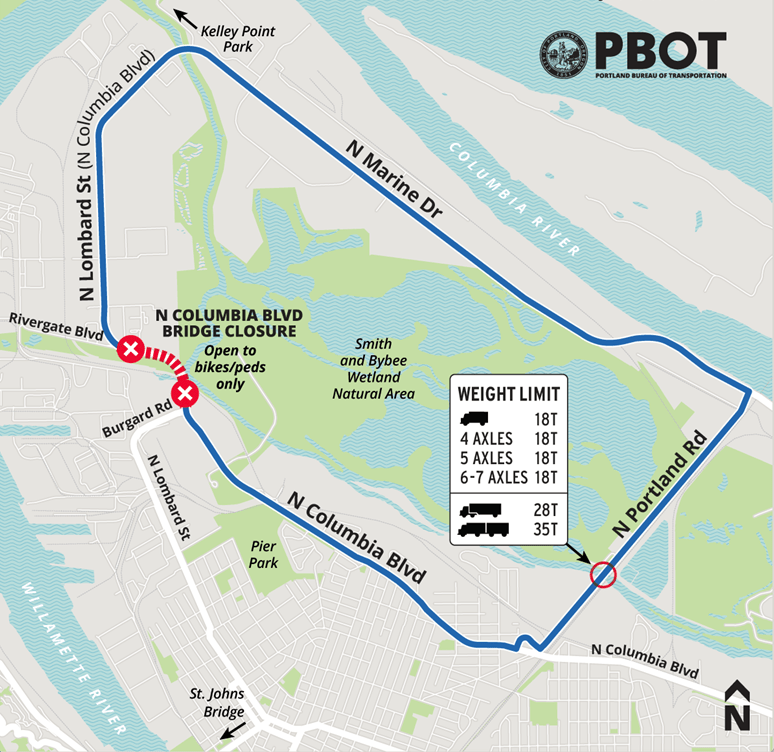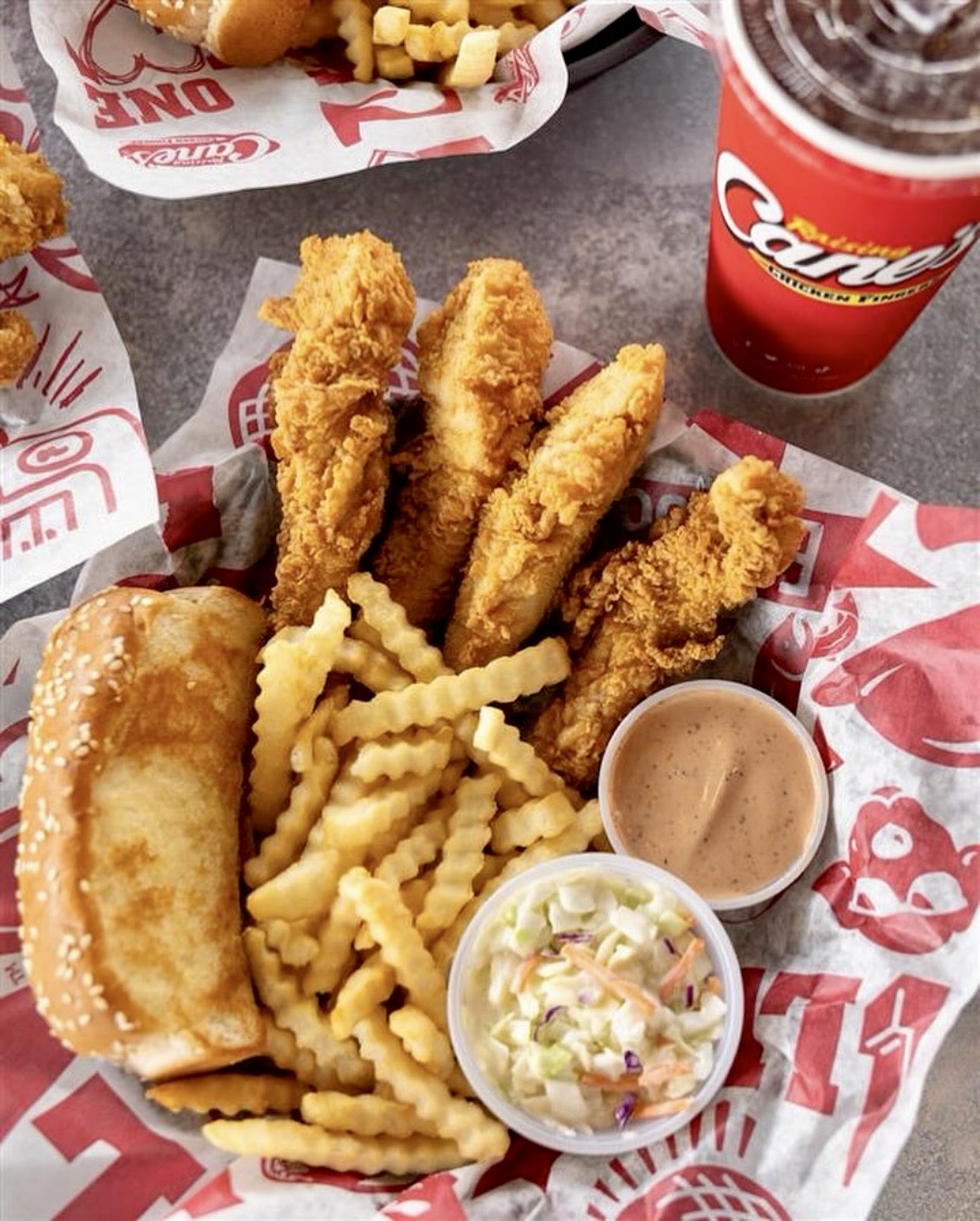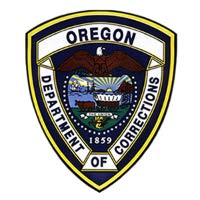Ruptured North Portland sewer pipe fixed, traffic detour continues through May
Published 3:00 pm Friday, April 5, 2024

- A map of the detour around the potentially damaged overpass in North Portland.
City work crews have repaired a pressurized sewer pipe that ruptured in North Portland, causing a sewage release into the Columbia Slough and potentially damaging an overpass in the Rivergate Industrial District area used by freight trucks and other vehicles.
Trending
Although the pipe has been fixed, work is still underway to determine damage to the overpass, which was immediately closed. Because of that, the detour around the overpass has been extended through May.
“As crews repair the bridge site near the break and investigate the potential for other areas of damage, a detour will remain in place and is expected to last through at least late May. Engineers with Environmental Services, the Portland Bureau of Transportation (PBOT), and a contractor for Environmental Services have been working together to repair the site and bridge as soon as possible,” the Bureau of Environmental Services said on Friday, April 6.
It is not unusual for the Portland Bureau of Environmental Services to warn of a sewage discharge from the city sewer system that it operates.
Trending
Blockages occasionally cause sewage to spill from access covers, sometimes into ditches and creeks.
And heavy rains still trigger combined sewer overflows into the Willamette River, although far fewer than before two large pipes were installed along both sides of the river to reduce them.
But the discharge announced on March 21 in North Portland was much more complicated.
A pressurized pipe from the pump station that serves the Rivergate Industrial District ruptured under a major overpass in the area, pushing sewage through the soil, across roads, into the Columbia Slough, and possibly damaging the structure supporting the overpass, known as the North Columbia Boulevard Bridge.
The rupture was more like a water main break that causes sinkholes in roads and floods homes and businesses, although, fortunately, no buildings were near it.
Complicating the situation, the pump station could not be shut down because that would disrupt sewer service to the area. So work crews had to pipe the surging spill past the rupture to a section of the pipe that continued to the nearby Columbia Boulevard Sewage Treatment Plant where it could be treated.
The rupture highlights the potential problems of Portland’s aging infrastructure. Although occasional water main breaks underscore the fact that many water pipes are well beyond their useful lives, few sewer pipe ruptures attract much attention.
But in fact, weeks earlier, a pump in the Ankeny Pump Station at Tom McCall Waterfront Park was shut down because of a break. The spill was largely contained in the large pipe along the west side of the Willamette River, which was installed as part of the Big Pipe project. But it has still not been repaired.
After the North Portland rupture, the overpass was shut down and the public was warned to avoid the slough while crews worked to locate and repair the rupture, and Portland Bureau of Transportation engineers evaluated the damage to the overpass.
“The incident is complex, and will require at least two weeks for repairs. Crews are maintaining service to customers in the area while assessing the extent of damage to the pressurized pipe and nearby pump station, as well as to the base of the bridge itself,” Environmental Services said in a release the next day.
According to Environmental Services, the overpass could remain closed for weeks between North Rivergate and North Burgard roads to allow for further assessment and repairs.
“Engineers with the Portland Bureau of Transportation are working with Environmental Services to assess whether the ramp to the Columbia Boulevard overpass is damaged. The flow of high pressure sewage inside the ramp structure may have damaged the ramp or soils supporting it,” the release said.
“With this risk, PBOT emphasizes the importance of obeying all road closure signage and detours. Traffic, including heavy freight trucks, could exacerbate any damage and extend the time needed for any repairs. Crews will reinforce the road closure with additional barriers, and may adjust the detour route to accommodate weekday traffic,” it continued.
A business association in the area emailed its members Friday to warn the bridge was closed and recommend detours for freight trucks.
“Initial word from structural engineers (who are wading in deep poo) is that the pressure release scoured out part of the bridge abutment. This is the primary reason for the bridge closure,” wrote the Columbia Corridor Association.






